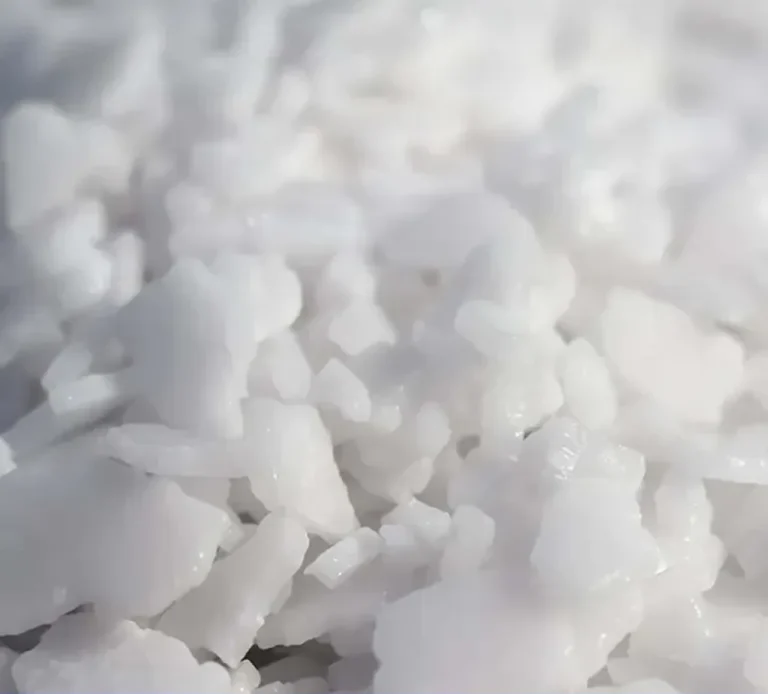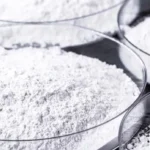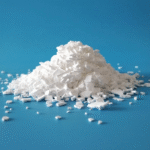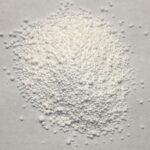Caustic Soda (NaOH) Uses and Safety
Caustic Soda (NaOH) Properties, Uses and Safety are important for end users which are applying this chemical in their own products. Caustic Soda (NaOH), also known as sodium hydroxide (NaOH), is a versatile chemical compound with numerous applications across various industries. It is a strong base and highly corrosive substance that is widely used in manufacturing, water treatment, cleaning, and other industrial processes.
In this article, we will explore the properties, uses, and safety considerations associated with caustic soda.
Properties of Caustic Soda (NaOH)
Caustic soda is a white, solid substance that is highly soluble in water. It has a strong alkaline taste and can cause severe burns and tissue damage upon contact with the skin or eyes. Some important properties of Caustic Soda (NaOH) include:
Chemical Formula and Structure
The chemical formula of caustic soda is NaOH, which represents its composition of one sodium atom (Na), one oxygen atom (O), and one hydrogen atom (H). It is an ionic compound, consisting of positively charged sodium ions (Na+) and negatively charged hydroxide ions (OH-). The hydroxide ions are responsible for the strong alkaline properties of caustic soda.
Physical State and Solubility
Caustic soda is commonly available in the form of flakes, pellets, or a solid crystalline substance. It is highly soluble in water, with a solubility of approximately 111 grams per 100 milliliters at room temperature. The solubility of sodium hydroxide increases with higher temperatures.
pH and Alkalinity
Due to its strong alkaline properties, caustic soda has a very high pH value. A solution of sodium hydroxide in water is highly basic, typically having a pH value of around 14. It is commonly used to neutralize acids and adjust the pH levels in various processes.
Uses of Caustic Soda (NaOH)
Caustic soda is widely used in various industries due to its versatile nature and strong alkaline properties. Some of the common applications of caustic soda include:
Manufacturing Processes
Caustic soda is used in the manufacturing of numerous products, including soaps, detergents, paper, textiles, and glass. It is a key ingredient in the production of sodium salts, such as sodium carbonate (Na2CO3) and sodium bicarbonate (NaHCO3), which find applications in various industries.
Water Treatment
In water treatment processes, sodium hydroxide is used to adjust the pH levels, neutralize acidity, and remove impurities. It is commonly employed in wastewater treatment plants, swimming pools, and water purification systems.
Cleaning and Household Products
Caustic soda is found in many cleaning products, including drain cleaners, oven cleaners, and degreasers. Its strong alkaline properties help break down grease, oils, and organic matter, making it effective in removing stubborn stains and unclogging drains.
Food Preparation
In the food industry, caustic soda is used for various purposes, such as peeling fruits and vegetables, processing cocoa, and adjusting pH levels in food products. However, its use in food preparation is strictly regulated, and it must be handled with caution to avoid contamination.
Petroleum Industry
Caustic soda plays a vital role in the petroleum industry. It is used in refining petroleum products, such as gasoline and diesel, to remove impurities and improve product quality. It is also employed in oil drilling and well stimulation processes.
Other Applications
Caustic soda finds applications in numerous other industries, including pharmaceuticals, metal processing, construction, and chemical manufacturing. It is used for pH adjustment, chemical reactions, and as a reagent in various laboratory procedures.
Safety Considerations and Precautions
Caustic soda is a highly corrosive substance that can cause severe burns and eye damage upon contact. It is essential to handle and store sodium hydroxide (NaOH) with utmost care. Here are some safety considerations and precautions to keep in mind:
Protective Measures
When working with Caustic Soda (NaOH), it is crucial to wear appropriate personal protective equipment (PPE), including gloves, goggles, and protective clothing, to prevent direct contact with the skin or eyes. Respiratory protection should also be used when working with sodium hydroxide (NaOH) in high concentrations or poorly ventilated areas.
Storage and Handling
Caustic soda should be stored in a cool, dry, and well-ventilated area, away from incompatible substances. It should be kept in tightly sealed containers and away from moisture, as it can absorb water from the air and become more corrosive. It is important to follow proper storage and handling guidelines provided by the manufacturer.
Dilution and Mixing
When diluting Caustic Soda (NaOH), always add it to water slowly and carefully, never the other way around. This helps prevent splashing and the release of heat, which can cause hazardous reactions. It is essential to mix sodium hydroxide (NaOH) in a well-ventilated area to prevent the buildup ofharmful fumes or gases.
First Aid Measures
In case of skin or eye contact with caustic soda, immediate first aid should be given. For skin contact, affected areas should be rinsed with plenty of water for at least 15 minutes. For eye contact, eyes should be flushed with water continuously while seeking immediate medical attention. It is essential to remove contaminated clothing and seek medical help if necessary.
Disposal
Caustic Soda (NaOH) should be disposed of properly, following local regulations and guidelines. It should never be poured down drains or disposed of in the environment. Contact your local waste management authorities for guidance on the safe disposal of sodium hydroxide (NaOH).
🧪 Why Choose Pars Universal Bitumen for Caustic Soda (NaOH)?
When it comes to sourcing high-purity Caustic Soda (Sodium Hydroxide), Pars Universal Bitumen stands out as a trusted and globally recognized supplier. Here’s why we are the preferred choice for industries worldwide:
✅ 1. High Purity & Quality Assurance
Our Caustic Soda is manufactured to meet international quality standards, with high purity levels (≥ 99% NaOH) ideal for use in:
-
Water treatment
-
Pulp and paper production
-
Soap and detergent manufacturing
-
Drilling mud systems
-
Chemical processing
We provide technical data sheets (TDS) and Material Safety Data Sheets (MSDS) with every shipment for transparency and compliance.
✅ 2. Flexible Packaging Options
We offer sodium hydroxide (NaOH) in various forms and packaging, including:
-
Flakes and pearls
-
25 kg bags, jumbo bags, or custom packaging
-
Bulk options for industrial-scale applications
✅ 3. Consistent Global Supply
With a well-established logistics network, we supply Caustic Soda to clients in over 25 countries with:
-
Reliable lead times
-
Export documentation
-
Custom clearance support
✅ 4. Competitive Pricing & Volume Discounts
We offer cost-effective pricing for both small and large quantities, along with bulk order discounts and long-term contract advantages for procurement managers and distributors.
✅ 5. Technical Expertise & Support
Our team of experts ensures:
-
Product selection guidance
-
Safe handling instructions
-
Recommendations based on your industry use
We’re here to help you streamline your sourcing process and reduce risk.
📘 FAQs About Caustic Soda (NaOH)
1. What is caustic soda used for?
Caustic soda (sodium hydroxide) is used in various industries including:
-
Paper and pulp production
-
Textile and dye manufacturing
-
Water treatment
-
Soap and detergent production
-
Petroleum refining
Its strong alkaline nature makes it essential in processes that require pH regulation or cleaning.
2. Is caustic soda dangerous to handle?
Yes. sodium hydroxide (NaOH) is highly corrosive and can cause serious skin burns or eye damage. Proper protective gear—such as gloves, goggles, and masks—should always be worn during handling.
3. Can caustic soda be used for cleaning?
Absolutely. It is commonly used as a heavy-duty industrial cleaner for removing grease, oils, and organic matter. However, it must be diluted properly and handled with caution.
4. How should I store caustic soda safely?
Store in a cool, dry place, away from moisture and incompatible substances like acids or aluminum. Always use sealed containers made of resistant materials such as plastic or stainless steel.
5. What should I do in case of skin contact or ingestion?
In case of skin contact, flush immediately with plenty of water for at least 15 minutes. If ingested, do not induce vomiting and seek immediate medical attention. Always refer to the MSDS for full safety instructions.
Conclusion: Caustic Soda (NaOH)
Caustic Soda (NaOH) (sodium hydroxide) is a versatile chemical compound with a wide range of applications in various industries. Its strong alkaline properties make it useful in manufacturing processes, water treatment, cleaning, and other industrial applications.
However, it is important to handle and store sodium hydroxide (NaOH) with caution, as it is highly corrosive and can cause severe burns and eye damage. By following proper safety precautions and guidelines, the use of caustic soda can be done safely and effectively in various industrial processes.
📢 Call to Pars Universal Bitumen
Looking for high-purity Caustic Soda (NaOH) for industrial use?
👉 Contact Pars Universal Bitumen today for:
-
Reliable global supply
-
Industrial-grade sodium hydroxide (NaOH) in flakes or liquid
-
Competitive pricing & custom packaging
-
Full MSDS, COA, and safety documentation
📞 Call us at +971 4 878 2031
📧 Email: [email protected]
🌐 Visit: PUB-Ltd
🔍 Request a quote now and ensure safe, efficient supply of caustic soda for your operations. If You have any other Query or Question you want to ask, Please don’t hesitate to Contact Us.




